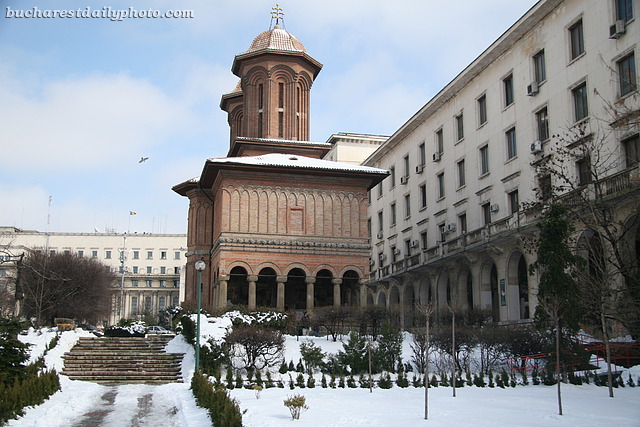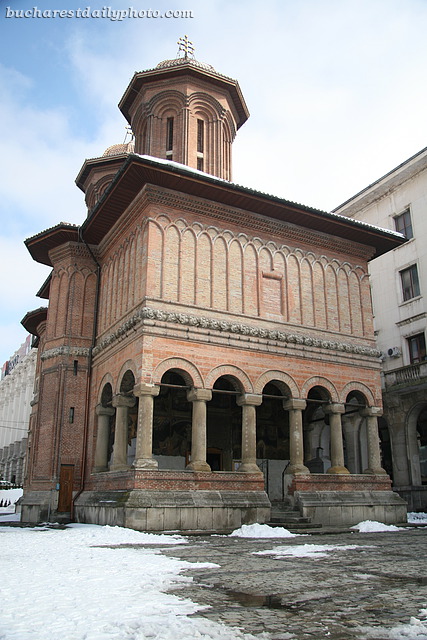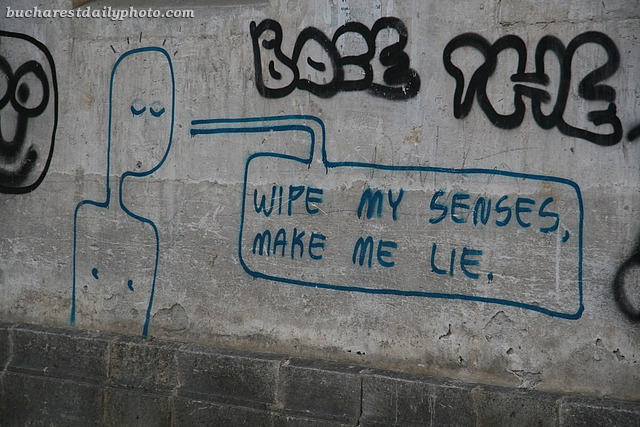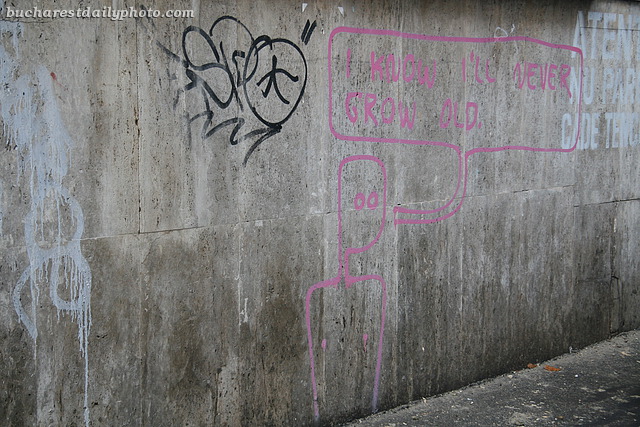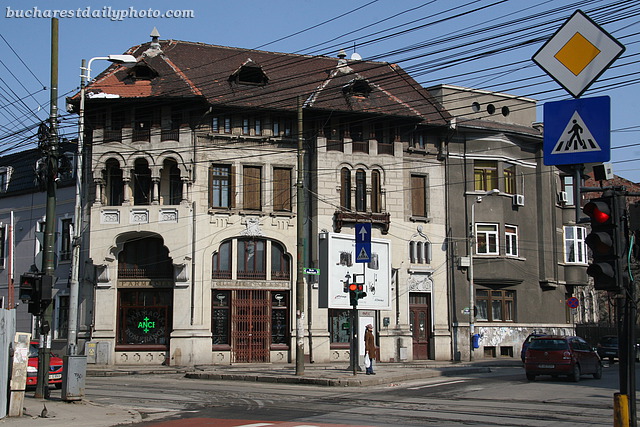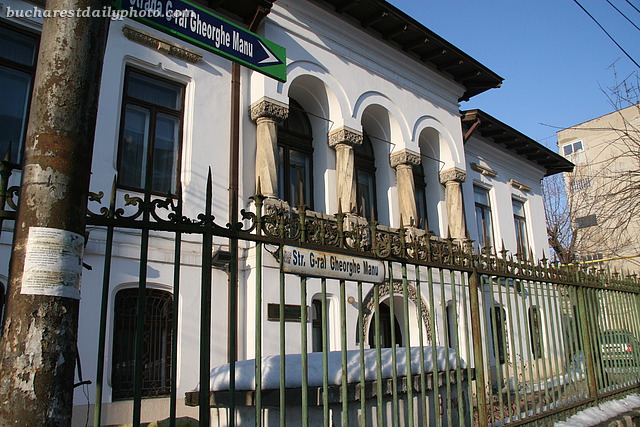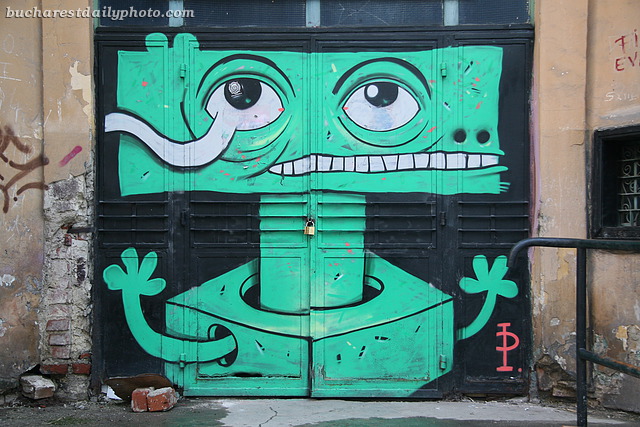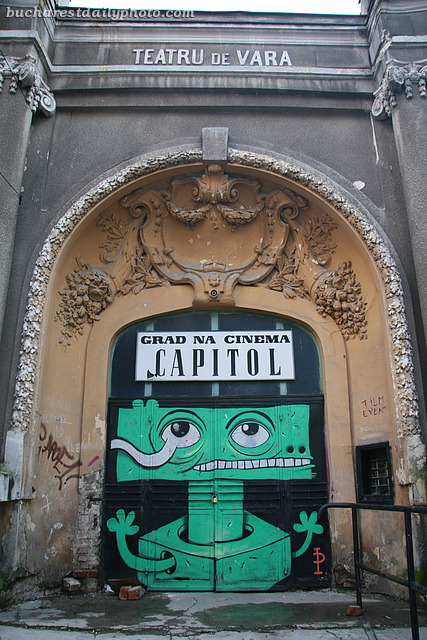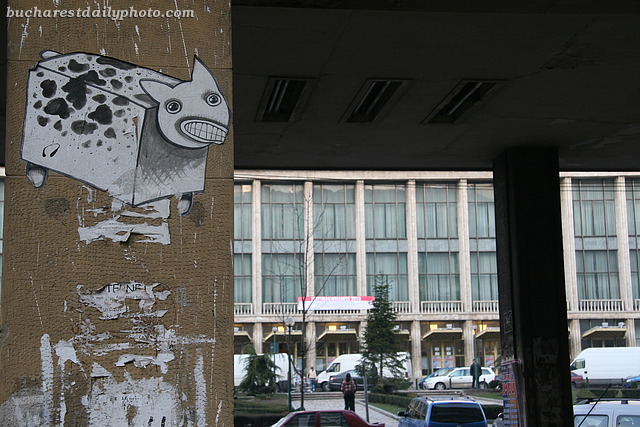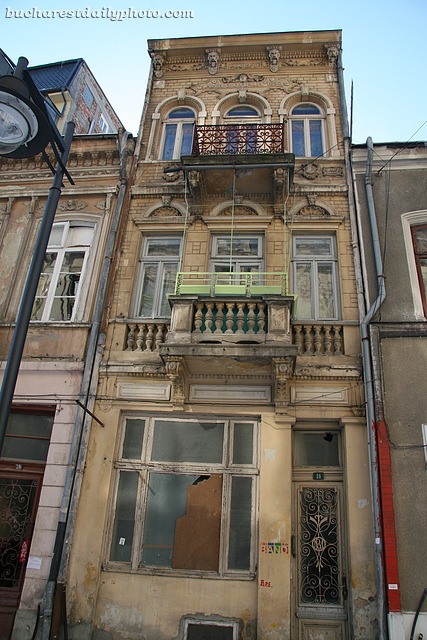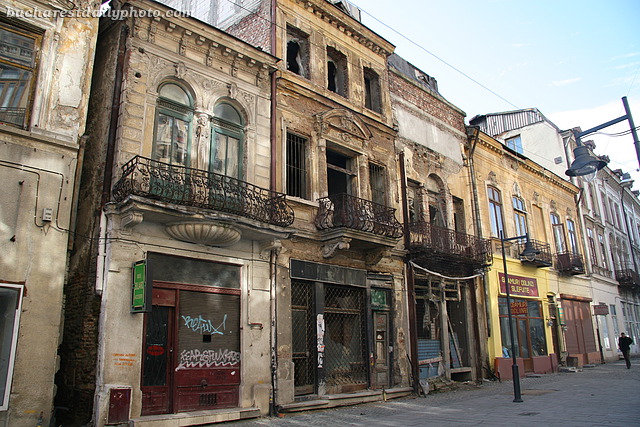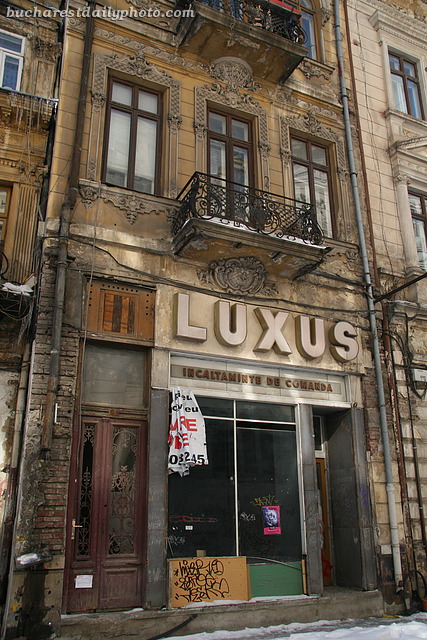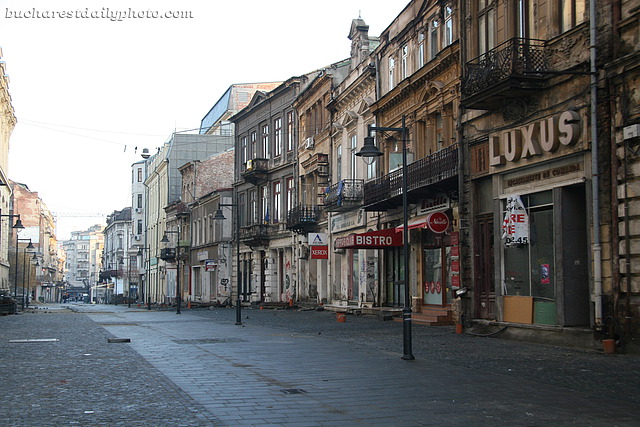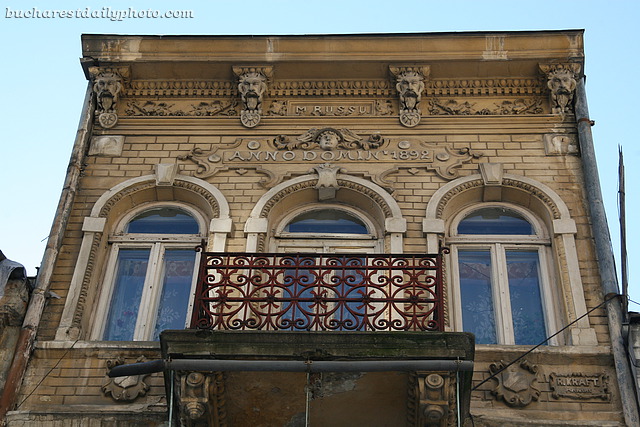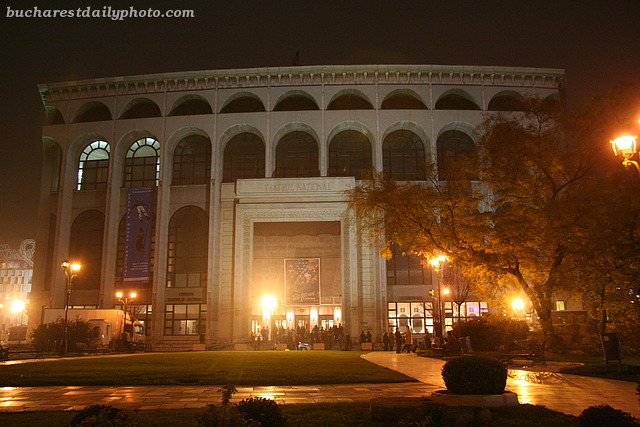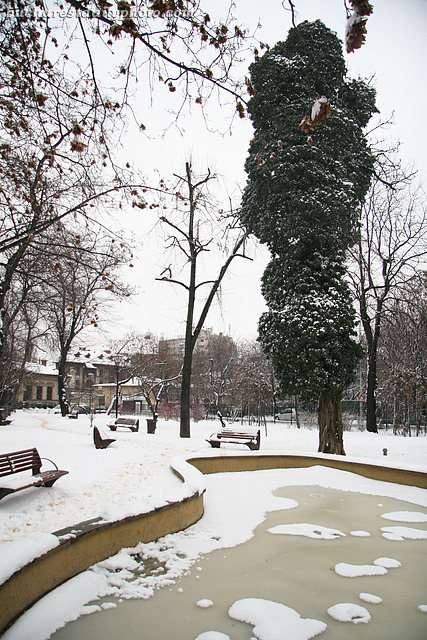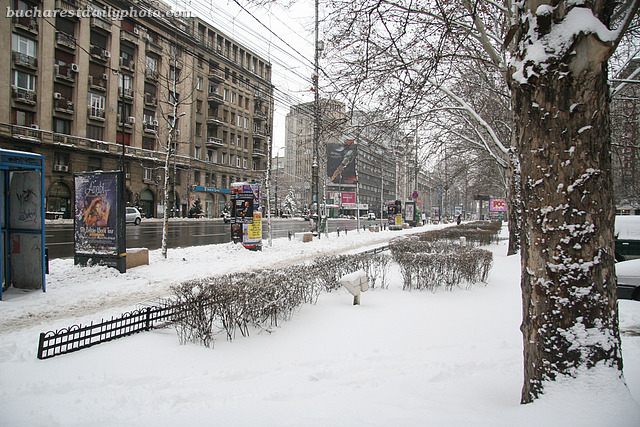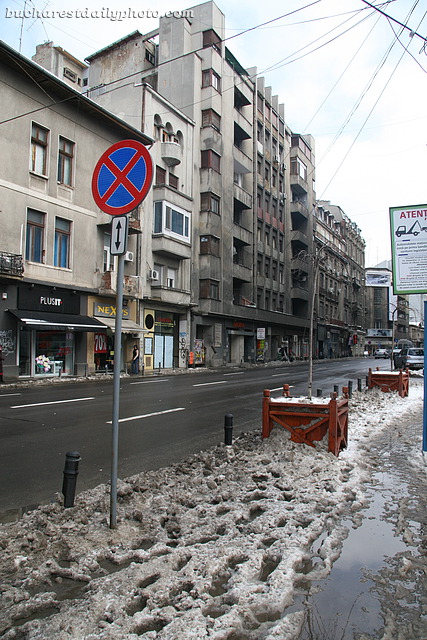Kretzulescu Church aka Creţulescu Church is an Eastern Orthodox Church located on one of the corners of the Revolution Square, by the former Royal Palace. This red brick beauty is one of the oldest churches in Bucharest, being built between 1720-1722 by the boyar Iordache Cretulescu and his wife Safta, a daughter of prince Constantin Brâncoveanu. The church is built in the style created by Constantin Brâncoveanu, a seventeenth century ruler of Wallachia, who commissioned numerous buildings during his reign and set out to create a distinctive national genre of architecture. The exterior of the church was originally painted, but the paint was removed during the 1935-1936 renovations, conducted by architect Ştefan Balş. More renovations were done after the 1977 earthquake and the Revolution of 1989. During the communist regime the church was scheduled for demolition but it was saved through the intervention of architects.
Remember the rudimentary drawn man with no lips? Lately I’ve been seeing him all over the city, administering his wisdom to whoever stops to look at him.
Yesterday I’ve showed you what is considered one fine example of the Neo-Romanian style of architecture. The building in today’s photo, a historical pharmacy on the corner of Vasile Lascăr and Maria Rosseti Streets is another good example of this kind of architecture which blends together elements from the local peasant architectural tradition with Byzantine and Ottoman elements and late Italian Renaissance themes. Since I’m traveling and I’m without my books I can’t tell you exactly when it was built. I tried to look it up on the web but I couldn’t find anything. I guess I’ll have to add the information when I get back.
This beautiful house on Calea Victoriei that nowadays houses the Art History Institute, was built in 1910-1912 by architects Grigore Cerchez and Alexandru Clavel. It is considered a great example of the Neo-Romanian style of architecture, which was very popular in Bucharest at the end of the 19th century beginning of the 20th. The Neo-Romanian style builds on Brâncoveanu-style, a traditional style developed during the reigns of Constantin Brâncoveanu (1688–1714) which integrated local peasant architectural tradition with Byzantine and Ottoman elements. The Neo-Romanian was the answer to the attempts of creating a national style in Romanian architecture. The house was built on the site of a 17th century construction and makes use of its preexisting walls. The owner of the building was the jurist Constantin Dissescu (1854-1932), a university professor who was the author of the first Romanian textbook on constitutional law. For a brief period of time Dissescu also served as the Minister of Justice and helped draft the 1923 Romanian constitution.
Alexandru Ciubotariu aka Ciubi is probably the most known graffiti artist in Romania. His signature is the “Square Cat” (Pisica Pătrată in Romanian), which is – as its name suggests – a sort of fantastical creature, shaped as a square. It can be seen on many walls in Bucharest and it’s become an urban brand. Back in January Ciubotariu became the first graffiti artist in Romania to have an album published. The album shows examples of the Square Cat’s appearances in Bucharest and a few other cities. I’ve already posted one incarnation of the Square Cat on this blog, back in September. Today’s photograph shows another one.
Because yesterday’s photograph showed only the upper floor of a building, it didn’t give a good idea about the extent of the work that needs to be done to bring the houses in the Old Town to their former glory. Which is why I decided to post a few more photos taken on Franceză Street. The first one shows the house whose second floor was the subject of yesterday’s shot. It is really a pity that this houses are not renovated because I believe – and I’m surely not the only one to believe it – that this area has a lot of potential.
Today’s photo shows the upper floor of a run down house on Franceză Street, one of the streets in the Old Town that’s already been repaved. Unfortunately, the buildings that line the street are dilapidated and in great need of repairs. Despite their decaying air, I personally really love them. I believe that through all that tired look you can discern their former elegance.
For the next two weeks I’ll be blogging from abroad. I do plan on having uninterrupted service, so please continue to stop by.
In my earlier post about Bucharest’s National Theatre I’ve talked about its facade being remodeled in 1984, which lead to the version which can be seen in today’s photograph. The theatre is scheduled to undergo renovation soon and if everything works as planned in two years we will admire a new facade, similar to the 1973 version!
I woke up yesterday morning, March 11, to discover that it was snowing heavily outside. I don’t think there’s anyone out there to deny that this winter was a rather harsh one. Usually, at the beginning of March, Bucharest enjoys a warmer weather, with a bit of sun. Well, not this year. Climate change anyone?
By today the snow has turned to rain and whatever gathered on the ground turned into a disagreeable slush.
